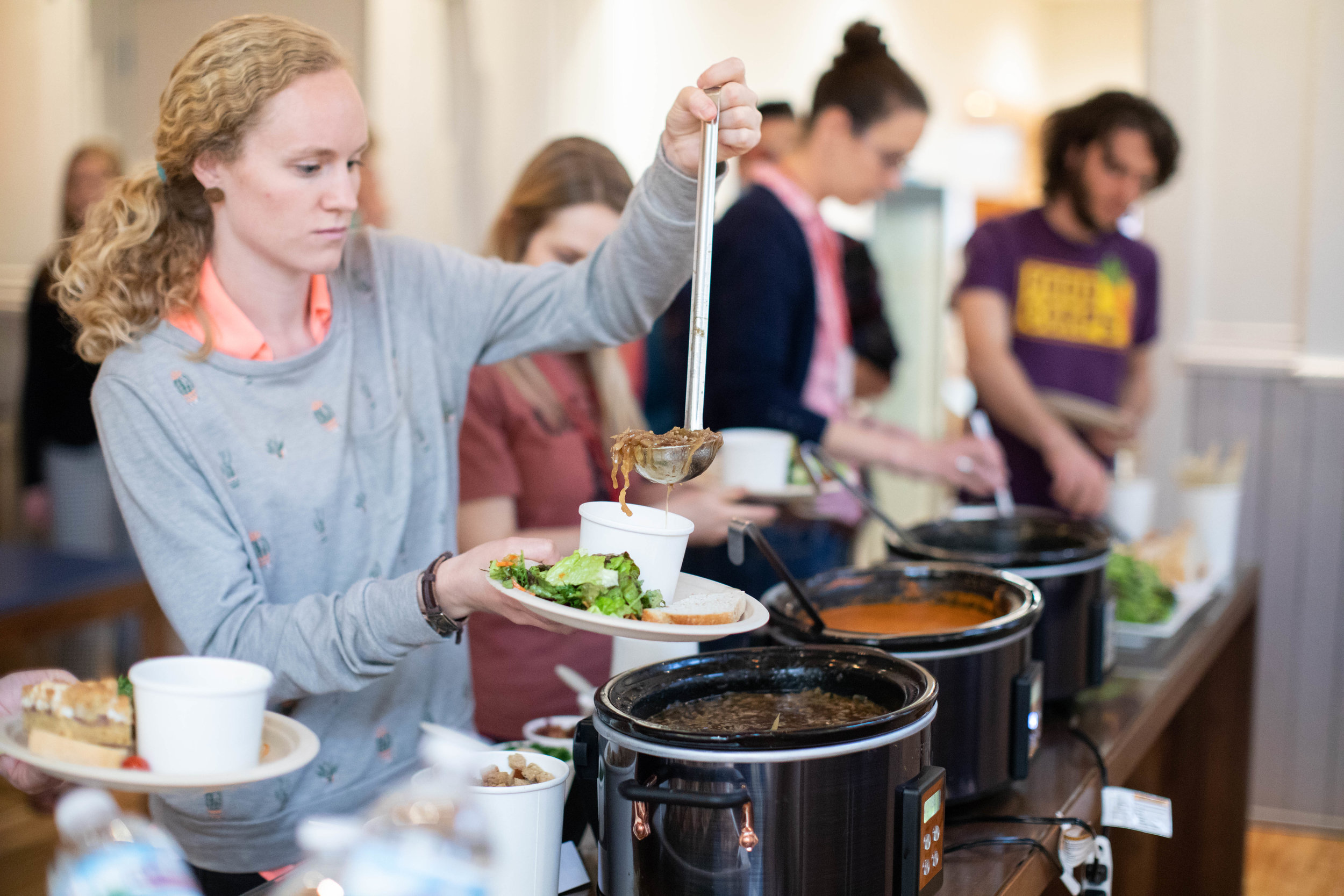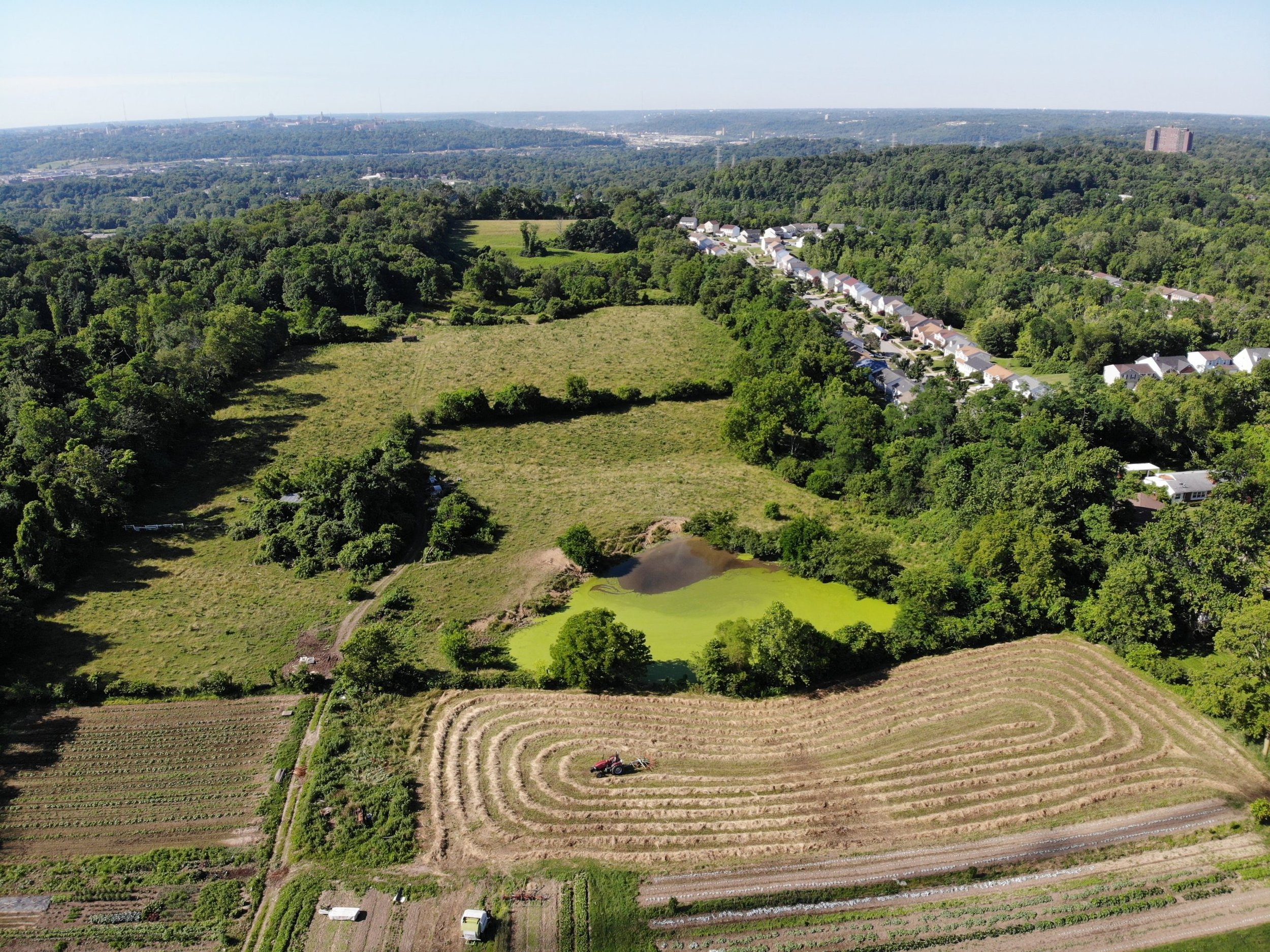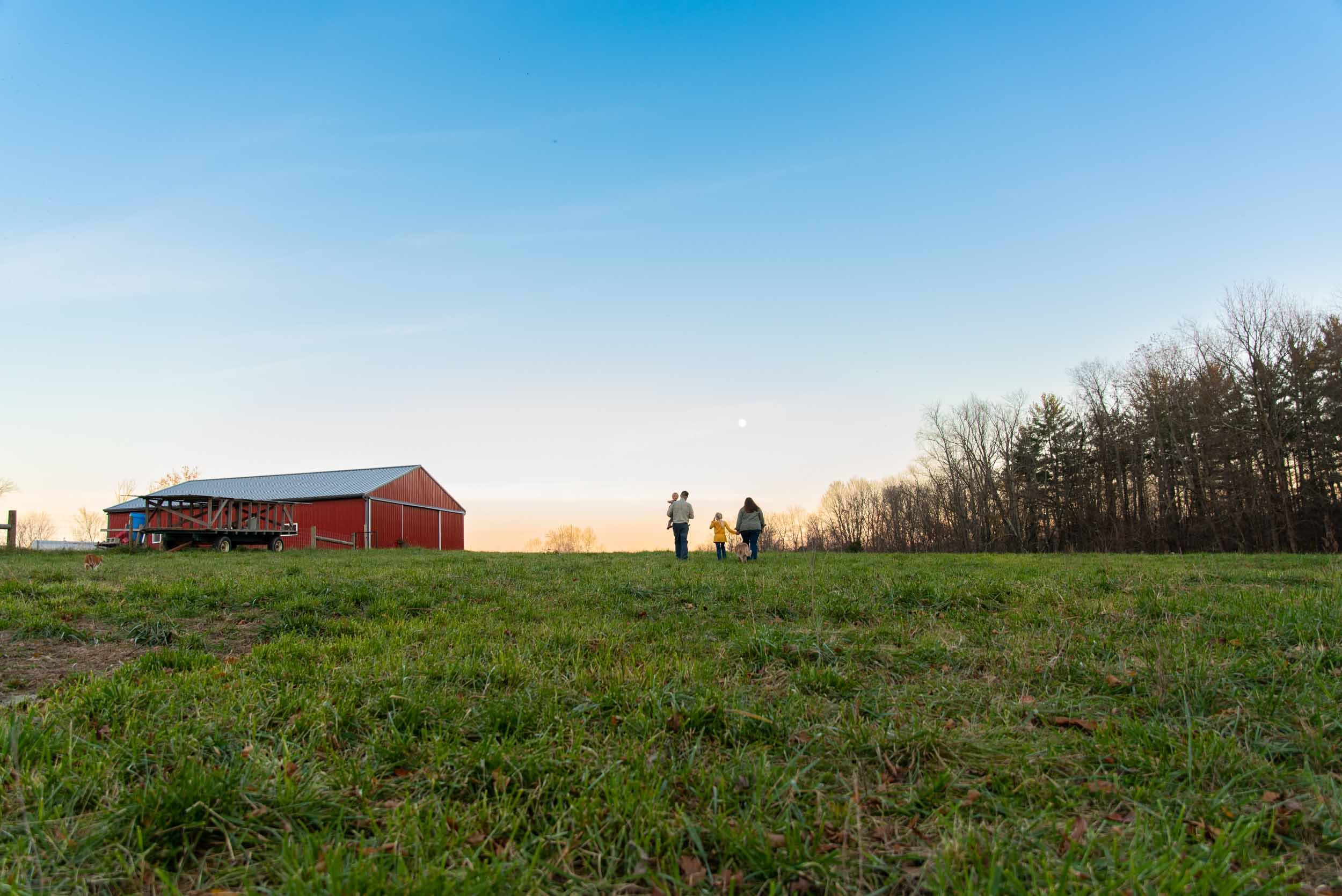The Roots of an Agricommunity

A family’s farm is transformed into a modern farm-to-table oasis and model for Midwestern sustainability
photography by Sarah Parisi Dowlin
When Leslie Ratliff wakes up each morning, she feels pretty great about her life—and for good reason. She’s weathered a serious autoimmune disease, raised two children (one with special needs) as a single parent, and managed to survive the housing crisis as a home developer. All of this before she revived her family’s farm and married it to Pendragon Homes, the home building business she started in 2004, transforming them together into the living oasis that is Aberlin Springs in Warren County, OH.
On a gorgeous Sunday afternoon, my husband and I made the trek out to Aberlin Springs for their jazz brunch event. We were greeted by signage promising “happiness around the corner,” a couple of sheep grazing near the entry, and stunning Swiss chalet-style buildings. We expected to find the land a bit too coiffed and the residents a little too cool. But boy were we wrong.
We’d been transported to an enclave of buildings once home to the Aberlin family and extended kin—that are now home to the agricommunity’s wellness center, visitor’s center, and market where residents go to “gather the good.” Beyond this village center, groups of homes lie out across the land interspersed with common greenspaces. Backyards feature wooded ravine vistas, rather than adjoining homes packed too close for anyone’s comfort.
Farm-centered, literally and figuratively, this planned agrihood reflects the care that Leslie Ratliff and her team have taken to design the land. The working farm, pool, and pond made it immediately clear Aberlin has an old-world quality and an energy all its own.
The palpable frequency at Aberlin extends throughout the 141 acres of forest and farmland. It’s a unique balance of fresh, open, and inclusive—yet established. Distinctly feminine, the architecture and planning infuse design with humanity and aesthetic sensibility, equal parts form and function. Ratliff understands how people use space and move about the land, and the choices throughout Aberlin reflect her depth of knowledge and finely tuned instinct from years of home building. Shoulder-to-shoulder cottages open to a shared courtyard greenspace, and million-dollar homes are strategically interspersed with more modest ranches for architectural and economic diversity. These farm-style and traditional two-story brick homes are a far stretch from the standard suburban cookie-cutter new build.
Aberlin’s Grand Dame
Once you meet Ratliff, you understand Aberlin Springs. She’s radiant, magnetic, and aristocratic. Equal parts wit and heart, she speaks with conviction and imagines in metaphor. Ratliff has the aura of an earth mother and the sensibility of a soothsayer.
She is an absolute force felt throughout the land. It is her philosophy on sustainability, her humanism, and central grounding in the importance of good, real food. Resident after resident we spoke to had different takes on the same story: “We weren’t looking to move, we found this place and met Leslie, we were absolutely compelled to live here.”
Kumbaya or New Age voodoo vibes? Perhaps, because joining an agricommunity in 2019 sounds like moving to the land of the earthier-than-thou. Agritopia, Serenbe, Hidden Springs, South Village—the names of similar communities across the U.S. conjure up idyllic visions of a farmland utopia. But in reality, they are characterized by actual working farms, which means a mix of raised beds, traditional crops, giant greenhouses, and grazing animals.
Aberlin Springs has all the necessary ingredients: 140 free-range chickens and counting, sheep to produce lamb, organic vegetables, and more. It’s being built to extend the farm-to-table philosophy to a lifestyle and to help educate, engage, and inspire the neighborhood population with the farming process. If you’ve dreamed of farming but don’t have the faintest idea where to start, agricommunities like Aberlin are one way to dip your toe in the pond.
Her-Story
You could say what is now Aberlin Springs is where Ratliff’s story begins. Her father, Fred Aberlin, a son of Swiss immigrants, had unstoppable grit and what she calls the “energy of a king.” An early Cintas employee, he retired when the company went public (at age 46), and then purchased the 141-acre family “hobby farm” where he and his wife, Barbara, would raise livestock and restore Georgian antique furniture.
But it wasn’t always bee hives and butterflies on the road leading to Aberlin. Between her father’s passing and the toll of her autoimmune illness, Ratliff found herself at a mere 20% life force. So she and Barbara listed both the farm and the Pendragon business for sale. Ratliff discontinued her intense Western medicine protocol, and her condition immediately improved. It was then that she began looking into her diet and environmental factors that could be impacting her health.
Just as the farm property was up for sale, her deceased father visited her in a dream and said, “I won’t allow you to sell the farm.” He asked her what she was passionate about, and she replied, “organic food.” He responded “do that.” Inspired, Ratliff set out to combine organic farming with her experience in home building. This led to the agricommunity business model that became Aberlin Springs. Because, as Ratliff says, “It’s really hard to fight with a spirit.”
Since 2014, Ratliff has developed a Midwestern agrarian empire, with phases of homes in progress—21 completed in phase one and construction underway on 22 homesites in phase two. This doesn’t include the list of people who want in on phase three builds. After the three phases, Aberlin will net out at a total of 138 homes in the community, ranging from $300,000 to well over a million dollars each.
One thing is certain about Ratliff’s team (including her mother, Barbara, and developer Maureen McDermott): These three women do their homework. Ratliff saw issues with agrarian commerce during their process of researching and auditing other similar developments, specifically issues around making farms work financially. Her solution: Like a golf course community’s monthly minimums, Ratliff structures the home owners association requirements to include an annual food fee—essentially obligating residents to fund the farm.
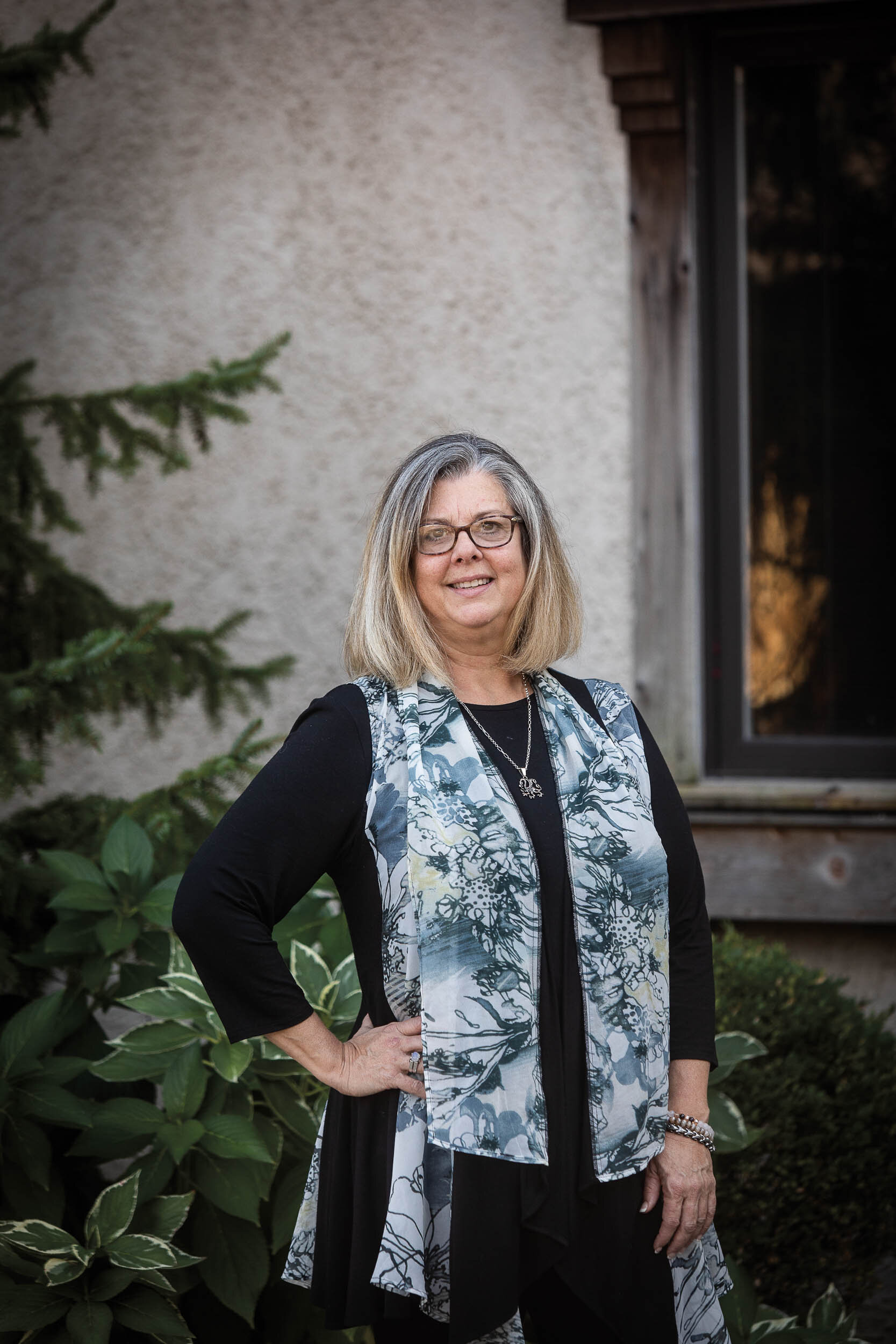
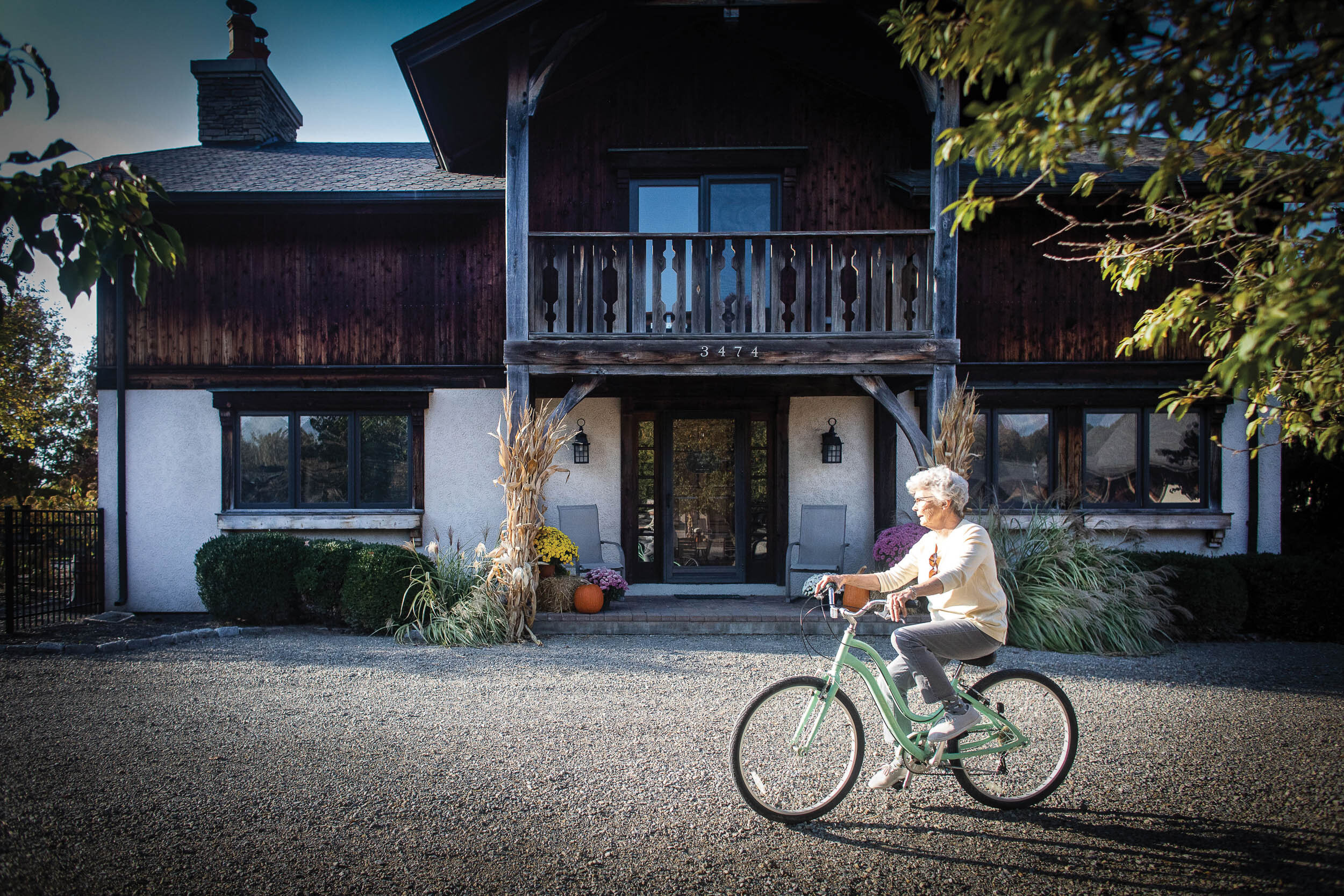

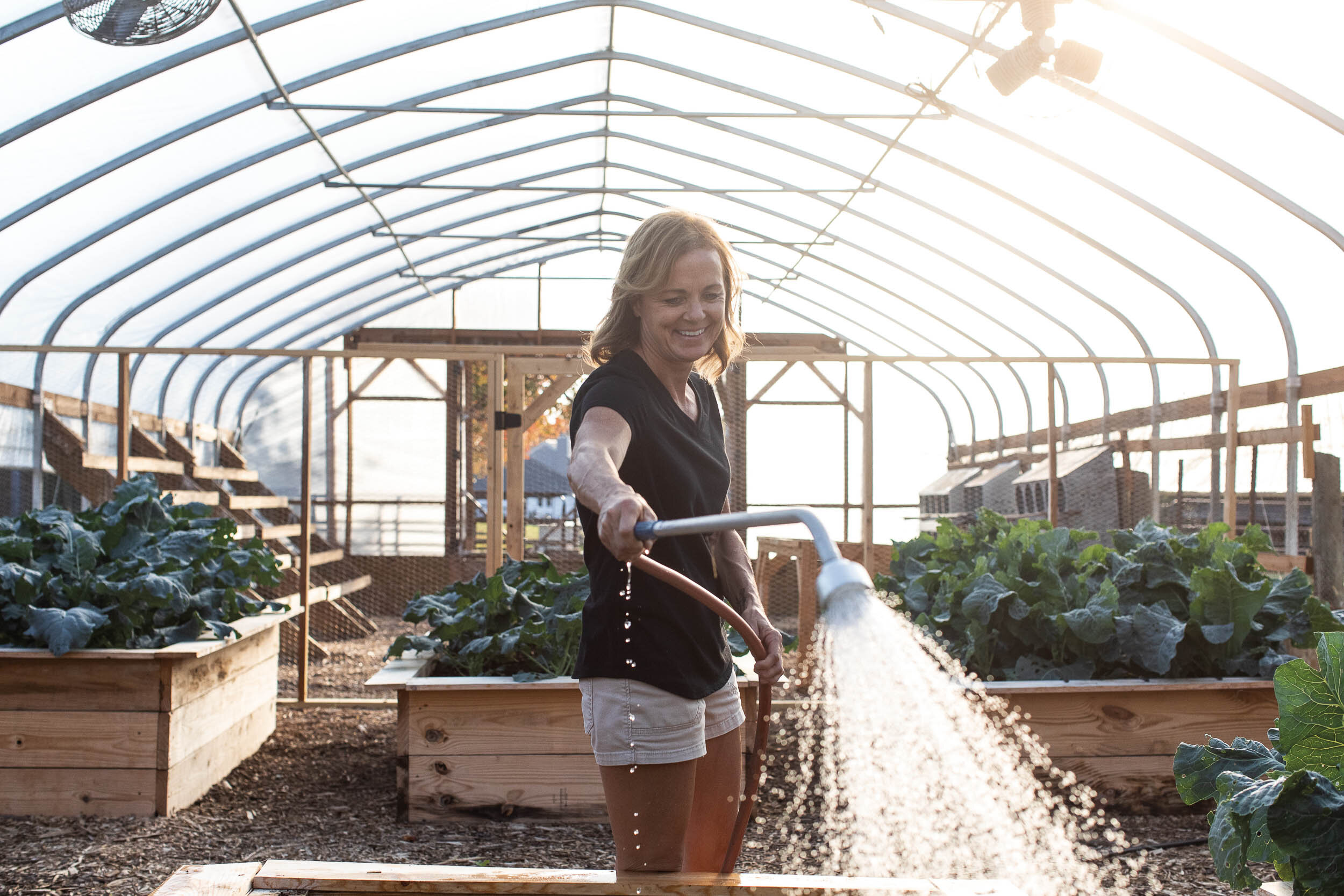
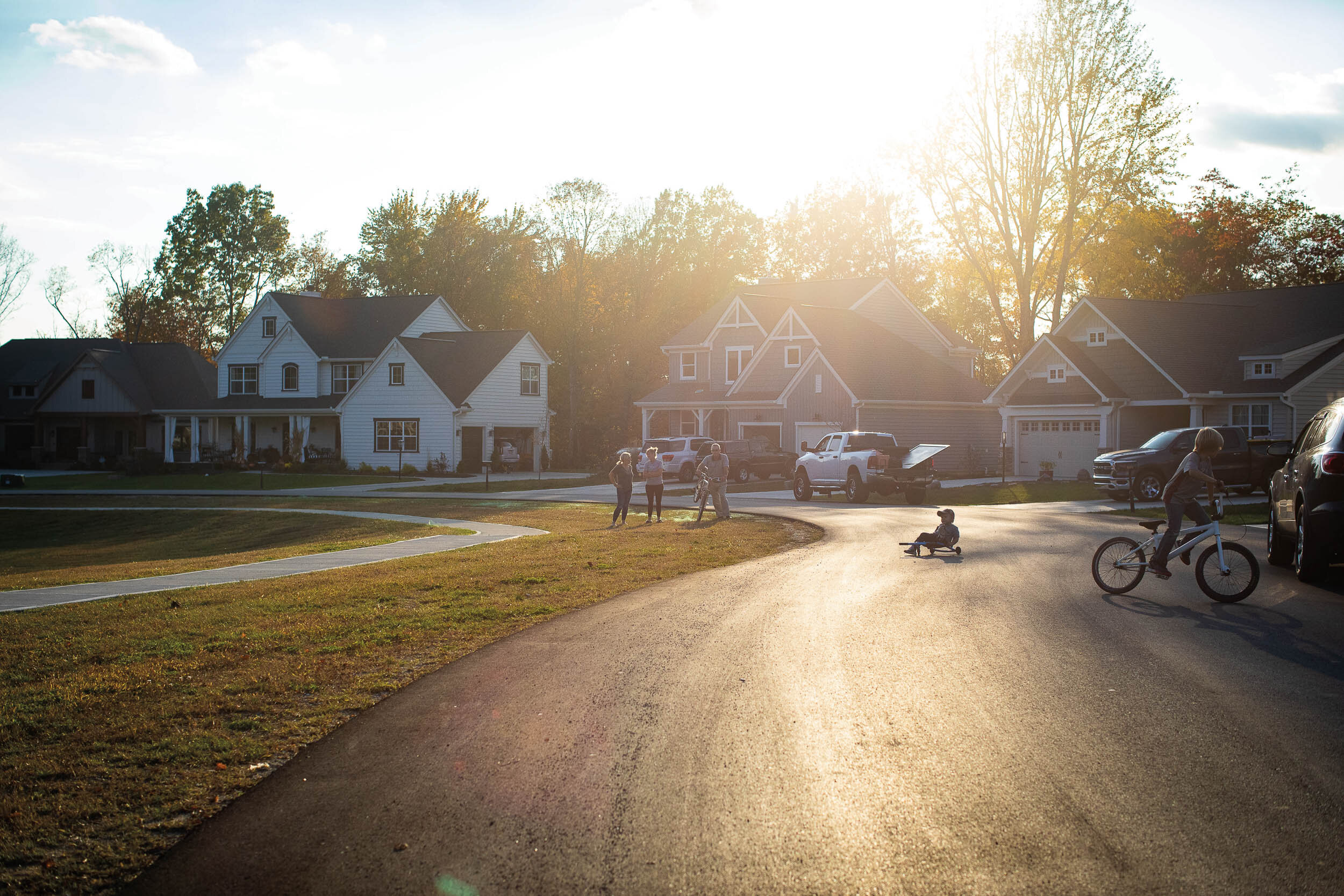
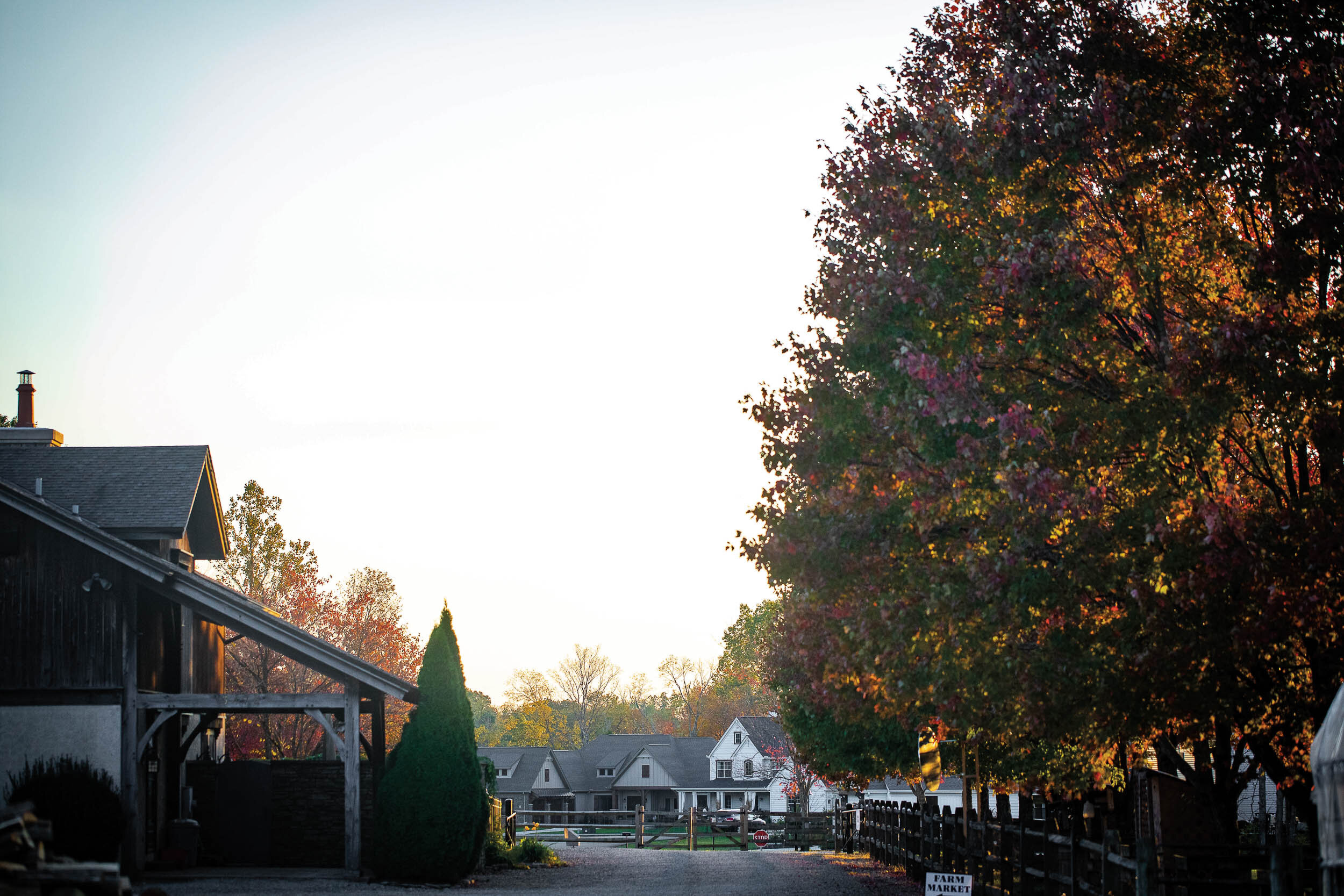
“This is the business model that will keep the farm working forever,” she says. Residents can use the $850 annual fee in food credits for produce, meat, and other products for sale at Aberlin’s on-site farm market. This is all done on the honor system. And unlike traditional community supported agriculture (CSA) memberships, the credits can be used toward the food and quantities each household wants and needs, instead of getting a CSA delivery of produce that includes vegetables you may not be familiar with, or more than you need.
The residents have more choices and opportunity than any standard CSA because Ratliff believes that “everyone needs to eat healthy.” On-trend with popular meal subscription models, Aberlin residents have the option of ordering chef-prepared meals from Rebecca Denney of Paleolicious. “It was so nice to have real food: steak tips in wine sauce with roasted vegetables,” say Jeff and Crystal Clark of their move-in day meal. It’s clear Ratliff wouldn’t have it any other way.
Sustainability for the Long Term
The Aberlin team has done the unthinkable in the region: They’ve orchestrated a closed loop, chemical-free system replete with all of the bells and whistles, including filtered purified water, private septic, and geothermal heating and cooling. In an effort to keep water on the land and maintain the closed loop system, residents access filtered water at their homes and throughout the property. The loop continues with a private septic system with drip irrigation that supports grass for grazing animals. This nutrient-rich soil will in turn help fertilize other areas of the farm devoted to growing produce.
Ratliff is a master of cross-pollination and connection. For example, various makers use the farm market space to sell everything from homeopathic tinctures, essential oils, and non-GMO organic skincare products to herbal teas, and many of these vendors actually live within the community. Likewise, she is always looking for ways to bring makers from beyond the community to add to the developing ecosystem. A long-term friendship with Jill Bechtel has led to a career change and fruitful two years of farming at Aberlin. Bechtel, a 20-year law enforcement veteran, needed to make a change and a distinctly different opportunity has been the right fit. She continues to use her well-honed investigative skills to discover best farming practices and tips from area farmers to inform how she manages the ever-evolving land at Aberlin.
In keeping with this hive mentality, a beekeeper has volunteered to help maintain bees on the Aberlin land. Ratliff has also hired a permaculture expert, Jacob Thompson with Barefoot Design LLC, to curate a food forest with an edible landscape of mushrooms, plants, grasses, and fruit trees. Residents have been eager to chip in, and she’s hopeful to perpetuate the forest throughout the larger property. Swapping out grasses for clover is also in the works to serve as a localized pollen-rich source for the beehives. (And the clover will actually cost less than mowing the land for the next five years).
This kind of planning down to the minute detail illustrates Ratliff’s overarching vision: one that centers on broad-spectrum “diversity of people, plants, animals, vegetables, and insects.” Phase one of Aberlin’s home and land development centers on butterfly preservation with plants that specifically nurture their full adult form, as well as the metamorphosis process. Phase two is all about bees, the hive, and pollination, with plants that will reflect this focus.
She Makes a Village
Aberlin Springs is a retro village of sorts, like something out of my 1980s childhood. Residents are looking out for their neighbors’ children, tents and hammocks are fastened to trees in the center wooded area—all of which convey a sense of freedom and imagination. Kids ride bikes and run the property without restriction or worry. Here lies a distinct spirit of play in a self-sustaining community. Resident Leah Lauchlain says, “It’s not uncommon to have another child at our dinner table on a regular basis, or one of our four kids eating down the street.”
There is a clear appreciation for what food is and where it comes from, and families are invited to become active participants in the process with optional plots of land to cultivate on their own. There is a spectrum of interests and reasons why food sourcing has taken on such an important role in residents’ lives. For some, a health concern led them to Aberlin; for others it’s about the connected community and movement back to children at play. But one thing remains a commonality among the residents: From multigenerational home set-ups to retirees aging in place and even young, expanding families, every arrangement seems to be buying in to a community mindset that is largely the result of Ratliff’s sheer authenticity and passion for the farm.
Residents Jeff and Crystal Clark explain their draw to the throwback, neighborly way of Aberlin Springs: “We’ve done more here in the last few days—and know more about these people [Aberlin neighbors]—than we did in our former community of 14 years. And we’ve only been here one week. We all get it. We’re all here for the same reasons.”
Erin Prus is a Cincinnati-based writer, editor and overall word person. Her experience spans copywriting for global branding and advertising agencies, to non-profit writing and content strategy. In a past life Erin taught composition and literature. She is passionate about writing on wellness and design – and using her writing powers for good.


